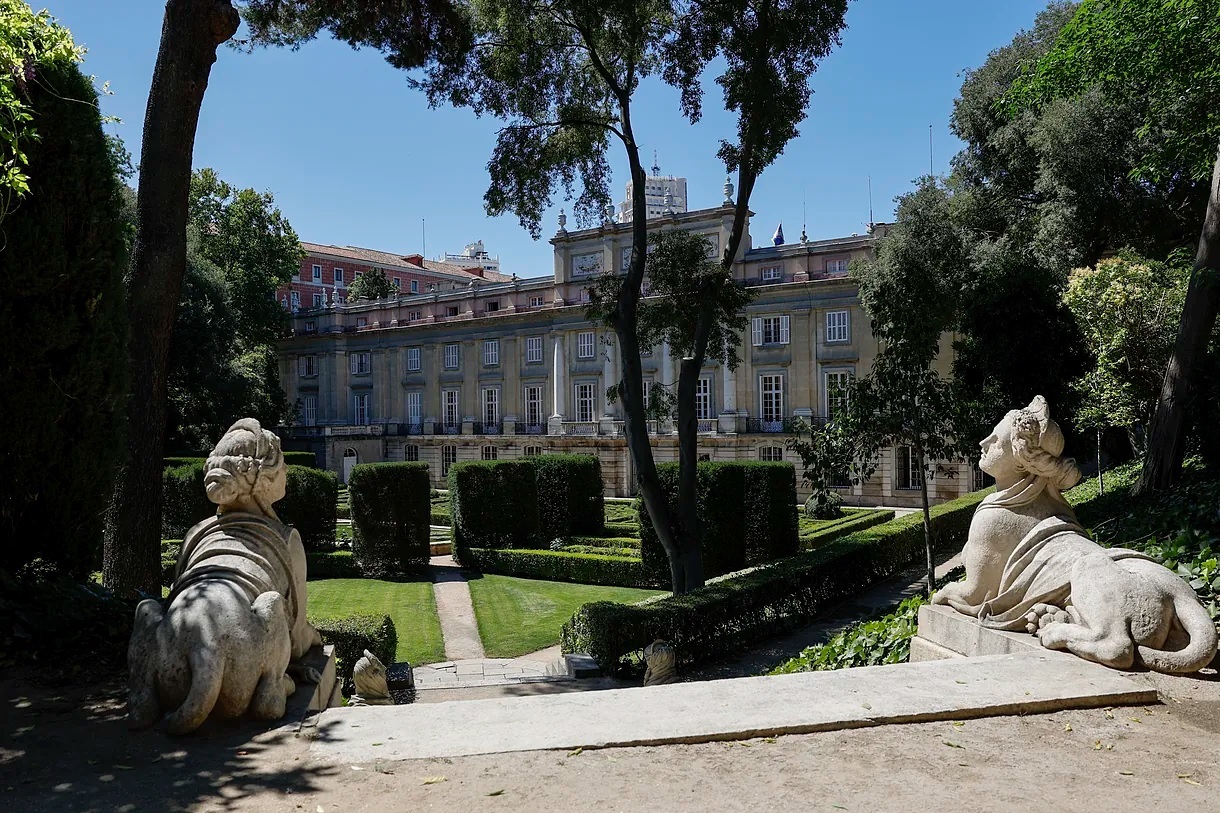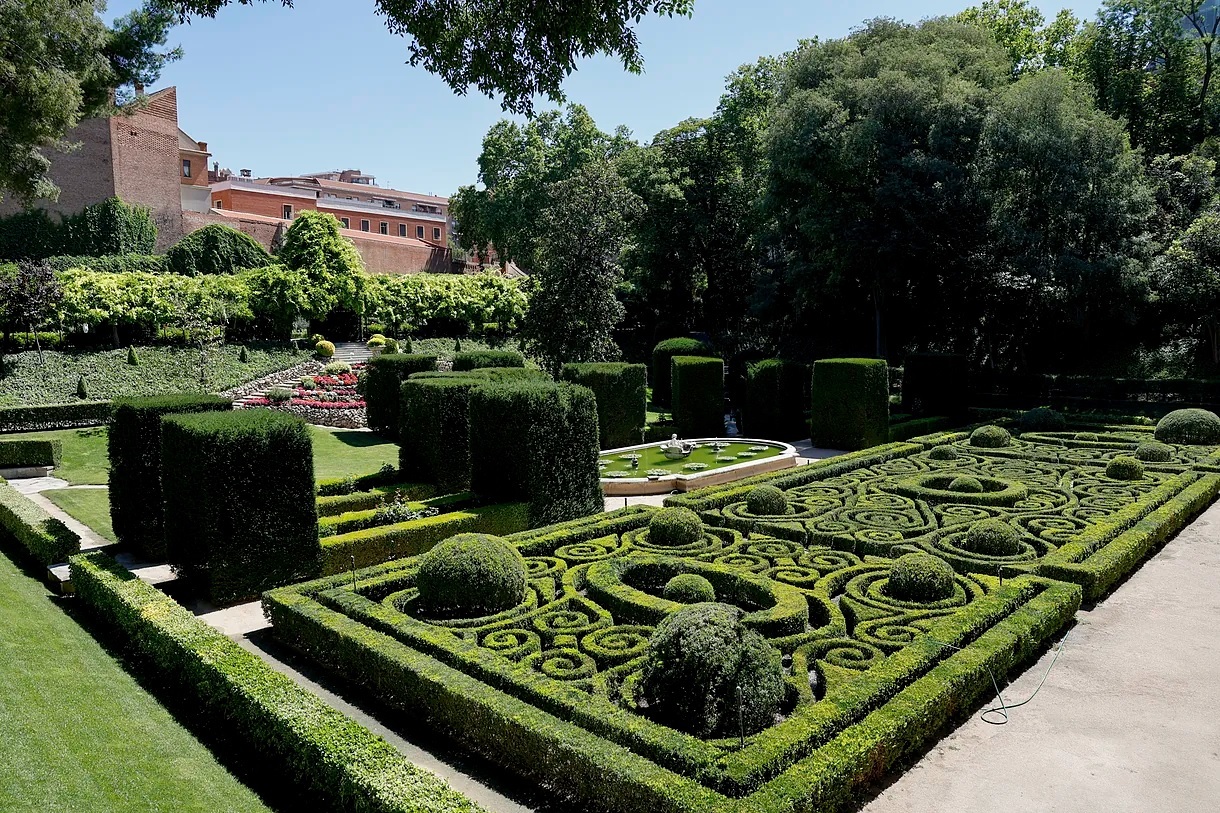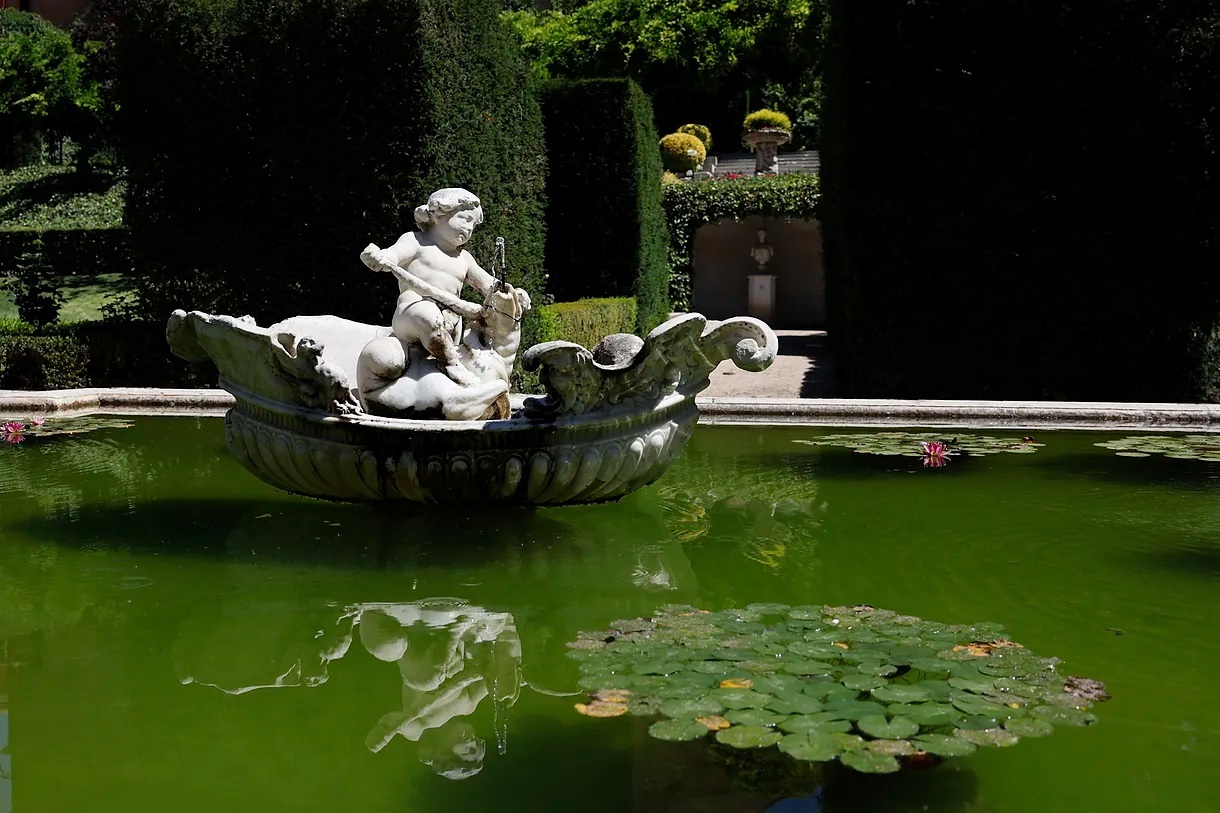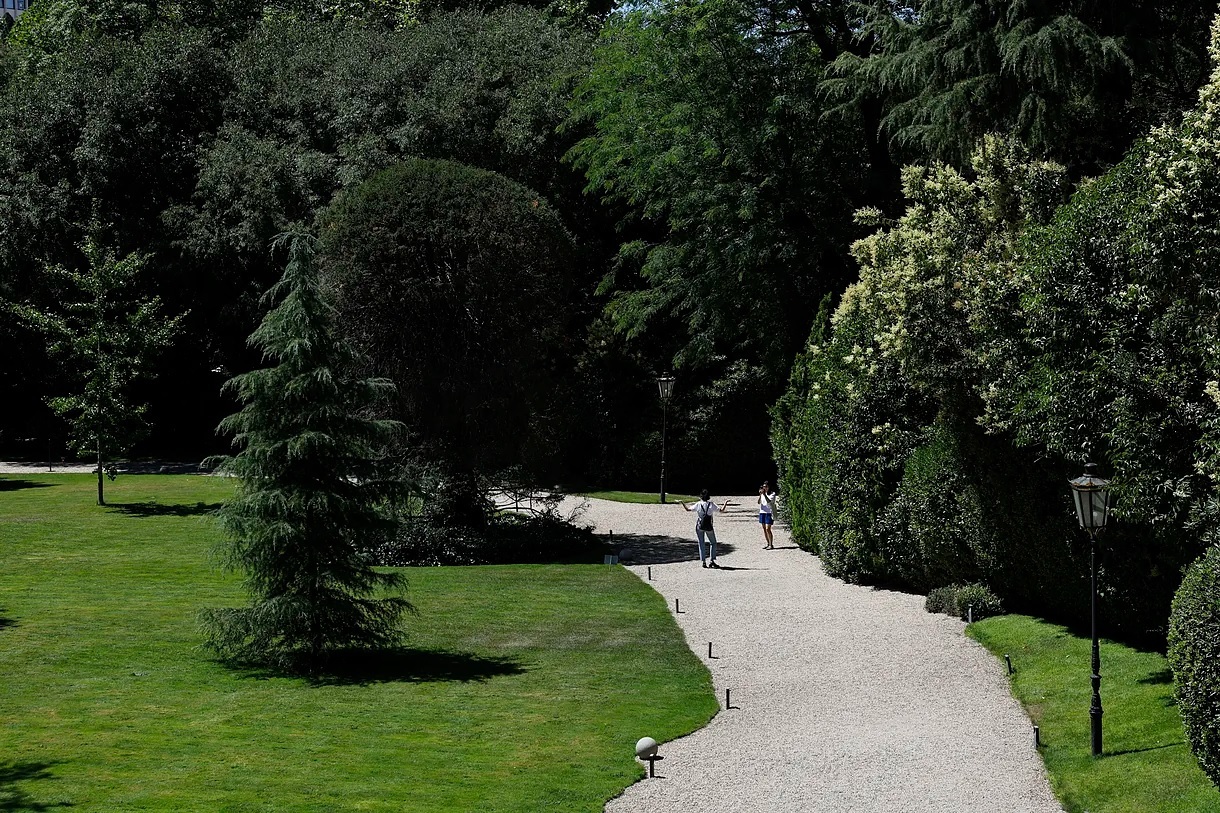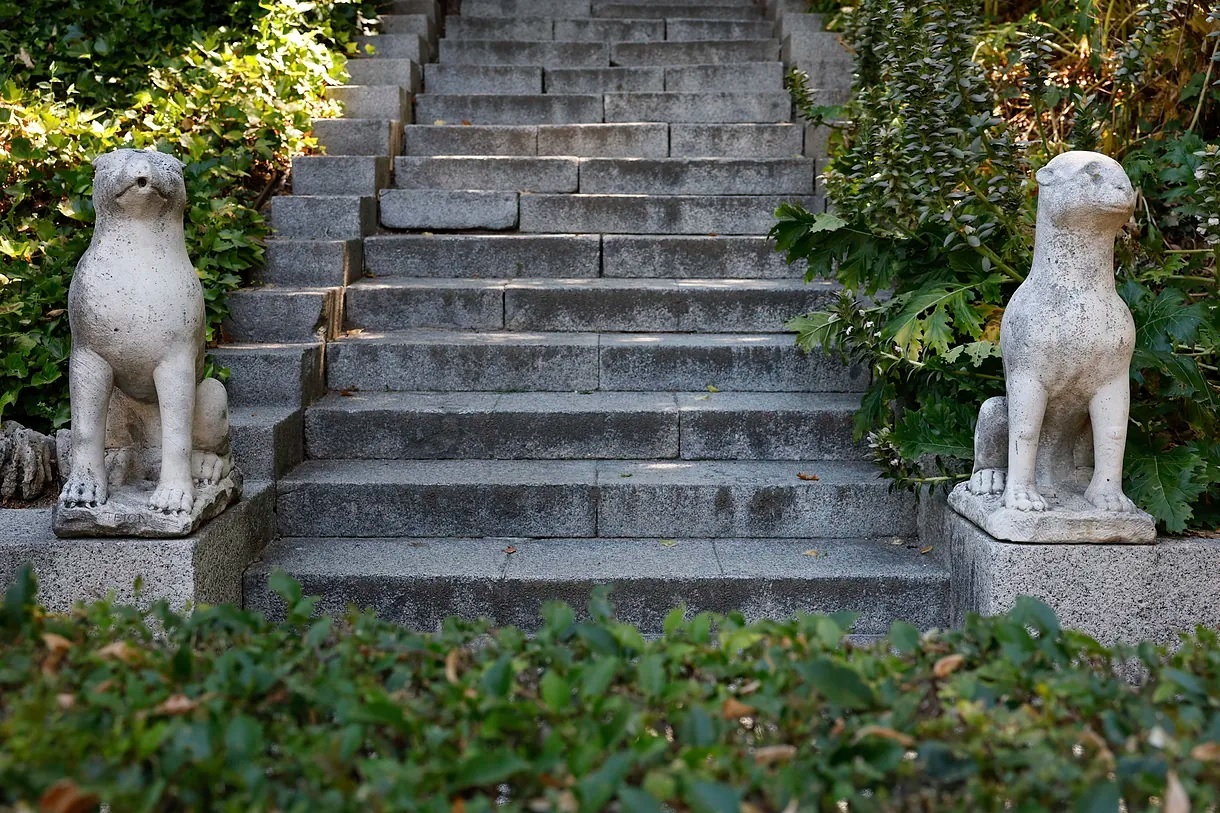In broad daylight, just a few meters from the bustling Princesa street and Plaza España in Madrid, in the Versailles-style garden hidden behind the Liria Palace, all that can be heard is the singing of cicadas. The heat even eases in this oasis, a unique gem in this part of the city's heart that until now could only be glimpsed through the windows of the Ballroom during the museum tour. This summer, for the first time, the Casa de Alba has opened its paths, although to a very exclusive audience.
A labyrinthine parterre with spirals, an oval fountain crowned by a cherub and decorated with water lilies, a pergola entwined with a large wisteria, Roman and Greek busts, a Venus, shrubs shaped like large cubes or circles, pines, horse chestnuts, ivy, cyclamens, agapanthus, and other seasonal flowers... The palace's back garden, also meticulously designed and cared for, has taken shape over the centuries to reach its current state. Although this architectural and sculptural garden was not always like this.
Its initial forms were given by the architect Ventura Rodríguez in the 18th century, when he built the palace under the orders of the 3rd Duke of Berwick and Liria, Don Jacobo Fitz-James Stuart y Colón. At that time, it already had the central fountain and a garden, like the building itself, symmetrical.
Until 1916, as explained during the tour, it did not undergo many changes. In that year, already living there was the 17th Duke of Alba, Jacobo Fitz-James Stuart, the parterre was built, and the sculptures that now dot the garden walkway were included.
"The duke turned it into a sculptural and architectural garden. He was passionate about history and brought classical pieces from Greece, Rome, as well as sphinxes and chimeras with the idea of protecting the enclosure and warding off demons, as was done in Egypt or in Gothic cathedrals. This is the same as what he did with the Palacio de las Dueñas in Seville," sources from the Liria Palace point out during the garden tour.
This work continued in the 1950s, after the palace suffered a fire during the bombing of Madrid in 1936, and the garden suffered damage to its flora. Upon his death, his daughter, Cayetana de Alba, continued his work to turn this oasis into a special place with a French-inspired style and inspired by the gardens of Versailles.
In the 1960s-70s, among other actions, the duchess planted a rose garden with flowers of different species where she could stroll. "She brought her animals here. She would bring the birds and parrots out here with their cages," the same sources point out shortly after revealing one of the secrets that this garden holds: a pet cemetery.
In a narrow passageway, hidden among bushes, are the tombstones under which rest animals like a dog belonging to Queen Victoria Eugenia or a monkey named Lucinda. "Here lie all those that belonged to the Casa de Alba: dogs, parrots, toucans, birds," they detail during the tour. A special place is occupied by Jacobo, a dachshund that was portrayed by Zuloaga alongside the 17th Duke of Alba in several works found in the palace.
The garden, about 6,000 m2, is surrounded by the walls of the Conde Duque Cultural Center and the Army War and Leadership School, and protected by the palace itself, which acts as an acoustic screen so that silence reigns in this place, where it seems that the thermometer also takes a break amidst so much greenery.
A feeling that changes on the other side of the building, in the front garden, where the July heat is intense and the noise of cars is noticeable. This area, less attractive due to its structure, in English style, and also as the entrance to the palace museum, is also visited during the tour.
The most special feature of this garden, which until the 19th century was a parade ground like that of the Royal Palace, are some of the exotic species it houses among its lawn carpet, such as a yew with an Asian variety or a Japanese cherry tree that blooms spectacularly for only one week a year. Compared to the back garden, "where humans have dominated nature by shaping the shrubs and placing sculptures and fountains," this is a garden "where nature has run wild without any order," explain from the Liria Palace.
The gardens are visited with a guide at the same time as the museum (23 euros) or independently (7 euros), in very small groups, from Tuesday to Sunday in two shifts (10:15 and 10:30 a.m.) this July. In August, there will be shifts throughout the opening hours (10:15, 10:30, 11:30 a.m., and 3:15 p.m.). The tour lasts about 30 minutes.
Since opening its doors just over a month ago, about 4,000 lucky ones have already been able to stroll here. There are hardly any tickets left, and at the end of August, it will close. Who knows if until next year. "The opening is something exclusive prompted by the visitors' own request," point out from the Liria Palace. And it should not be forgotten that these gardens belong to the official residence of the current Duke of Alba.
